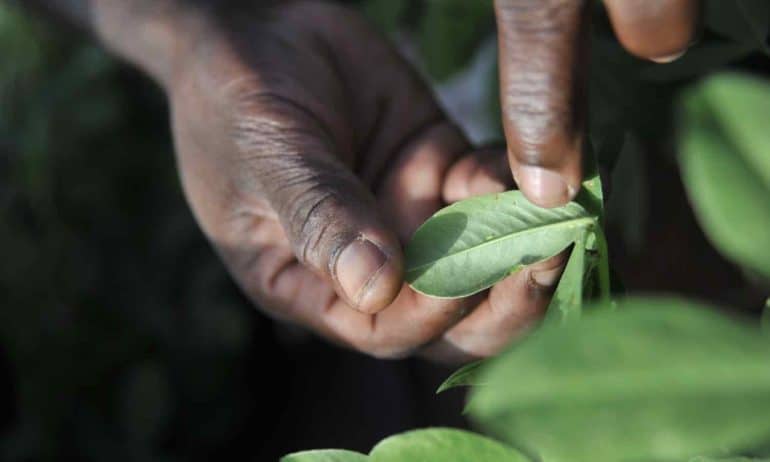The buzz and crackle of a car radio tuner searching for a clear station is a sound most of us are familiar with. On a long road trip we can juggle back and forth between lots of semi-decent options, the talk-show hosts shouting over the classic rockers, who in turn try to drown out commentary on the latest World Cup match. But rarely do we hit upon that one crystal clear station that jives perfectly with both our mood and the landscape.
Like staticky signals on a car radio, there are a lot of different voices in agricultural development all wanting to be heard. Governments and politicians shout about national GDPs and economic growth. Farmers shout about crop yields and input costs. The private sector shouts about new technology and investment opportunities, while development organizations shout about equity and sustainability.
Despite their differing agendas, there is one irreducible factor that effects the goals of all agricultural stakeholders: the climate. Scientists have been shouting about this one for a long time, but is there a way to get everybody on the same wavelength?
“Climate-smart” agriculture – that is, agriculture that is productive, resilient, and part of the solution to the climate problem – must become the new paradigm in the 21st century. Why is climate-smart agriculture so important? Here are three good reasons:
1) Global wheat and maize yields have been projected to decline to an alarming degree in response to warming temperatures, underlining the urgent need to adapt crops and management techniques to a warmer and more unpredictable world;
2) Temperature and rainfall variations have been shown to drive crop yield variations, meaning food security is dangerously sensitive to the vagaries of the climate; and
3) Agriculture is part of the climate problem, with 19 to 29 percent of global greenhouse gas emissions attributable to agriculture-related activities (2010 estimates). Fortunately, agriculture also offers huge opportunities for climate change mitigation and emission reductions should climate-smart agriculture be adopted wholesale.
So, can we make climate-smart happen? The obstacles are great, and there are some that say it can’t be done. But if, as a global community, we tune in to the same wavelength and articulate our efforts in a truly global partnership, we have the means to rise to the challenges.
Climate-smart agriculture isn’t exactly a newborn concept yet to find its legs. On the contrary, millions of farmers worldwide are already reaping its benefits. Agroforestry efforts in Niger, for one, have seen 200 million new trees established on over 5 million hectares of farmland, resulting in an additional half million tons of grain produced per year, decreased impact from drought, and improved soils and animal fodder for an estimated 2.5 million people.
So what if we spread agroforestry across all of Africa? Estimates show it could boost productivity by an additional 615 calories per person, per day, for over 140 million people, as well as sequester 2 Gt of carbon dioxide equivalent (or one-third of global direct agricultural emissions) per year. Combining agroforestry with other pertinent climate-smart practices could generate a truly productive and resilient global agricultural system.
Other success stories make an equally strong case. Our next big challenge, then, is to turn millions into billions by implementing a major scaling-up process for all the elements of climate-smart agriculture.
The Consultative Group on International Agricultural Research (CGIAR) Program on Climate Change and the Agriculture and Food Security (CCAFS) are joining forces with Food and Agriculture Organization of the United States (FAO), World Bank, International Centre for Research in Agroforestry (ICRAF), Friedreich’s Ataxia Research Alliance (FARA), International Center for Tropical Agriculture (CIAT) and other members and supporters of the Global Forum on Agricultural Research (GFAR) in hopes of bringing together the right knowledge, finances and policies to do just that. This CSA Alliance will count on the involvement of governments, businesses, civil society groups, producer groups and research organizations to hit the target of a half billion farmers using climate-smart agriculture – 22 percent reduction in agricultural emissions as compared to the business-as-usual baseline, and a 46 percent reduction in forestry and land-use change by 2035.
Such an ambitious goal will require a comprehensive approach. The CSA Alliance will rely on an extensive partnership network to link research with development, science with policy, and public with private. It will generate more knowledge on everything from on farm climate-smart practices and technologies to programmatic elements such as insurance schemes and climate information services. It will work to enable climate-smart agriculture by influencing national and sub-national policy, global United Nations Framework Convention on Climate Change (UNFCCC) climate processes, and donor agendas and by promoting the necessary incentive mechanisms through innovative finance and private sector involvement.
It’s a lot to do! But uniting all our voices into that single, crystal clear radio wave is already a powerful achievement. An agriculture that can strike the perfect balance between productivity, resilience and climate change mitigation may be just the star-quality combination we’re looking for.













